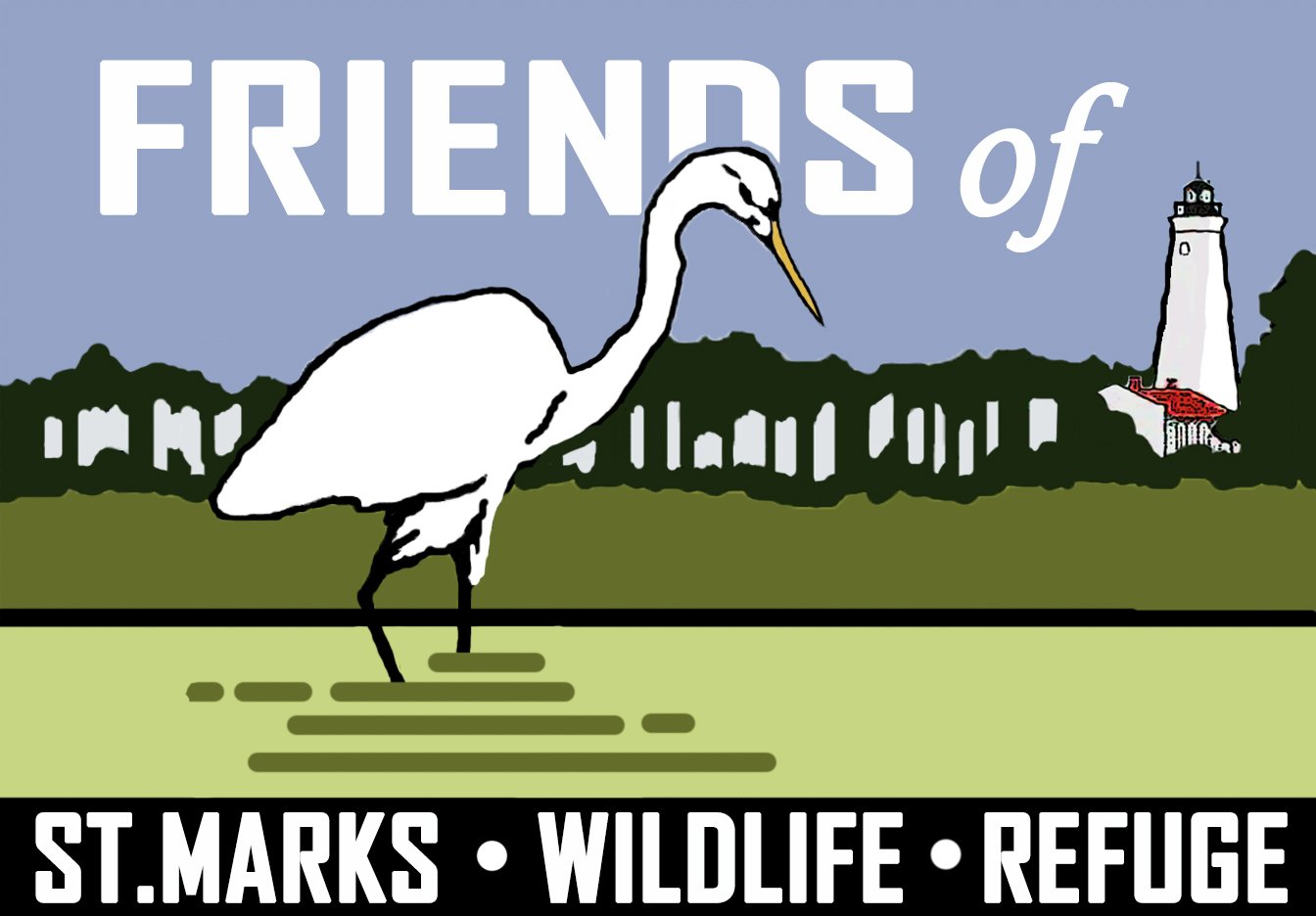It is November at St. Marks NWR. Cypress needles are turning a rich rust color and Fall migration is winding down. Garlands of yellow grape leaves hang from the trees and winged sumac has turned red. The Fall wildflower peak is over, but there are still some goldenrods to provide sustenance for the last of the migrating Monarch butterflies and Gulf Fritillaries. By the end of the month, as temperatures drop, butterflies will be scarce on the refuge.
Most of the Fall migrant birds bound for wintering grounds in the Caribbean or South America have passed through. BirdCast radar showed that over sixty-eight million birds crossed the refuge during this year’s Fall migration, but nights with flights of hundreds of thousands of birds are now over. There are still a few south-bound migrants. The last Yellow Warblers will come through early in the month and a few stragglers and late-migrating boreal forest nesting warblers will continue into mid-November.
This is the month to listen for Sandhill Cranes giving their ululating call on blue-sky days following cold fronts as they surf down the north wind. It is also always the best month to watch for geese. Snow Geese are the most common, but Greater White-fronted, Ross’ and Canada are possible. A few Greater White-fronted Geese have already been reported at the refuge.
Ducks have already begun returning to the refuge. The Halloween survey showed 326 ducks of 11 species including both teal species, Shoveler, pintail, wigeon, Redhead, Ring-necked Duck, Lesser Scaup, and our resident Wood Ducks. These are good results this early in the duck season. November will see the return of our deep winter ducks; Mallard, Black Duck, Canvasback, mergansers, Common Goldeneye and Bufflehead. Expect duck numbers at the refuge to triple over the next few weeks.
A lot will go on this month. Common Loons will return as Northern lakes begin to freeze. White Pelicans, huge birds with nine-foot wingspans, will slowly transit the refuge in great wheeling flocks, flashing white as they turn. Horned Grebes, and Ring-billed Gulls will arrive.
Many of the refuge’s winter birds; phoebes, Yellow-bellied Sapsuckers, Ruby-crowned Kinglets, Swamp Sparrows, and House Wrens arrived in October, but their numbers will increase this month and the refuge will see the return of Cedar Waxwings, robins, and goldfinch. Shorebird numbers will spike as the main bulk of Dunlin arrive. By the end of the month, Dunlins will be the most common shorebird species at the refuge.
It is November at St. Marks NWR. Change is in the air. Bird diversity and numbers on the refuge are rapidly climbing up to their winter highs. There are still some warm days to come, but expect to enjoy a few cool, clear days this month.
It is high time you came down to the refuge.

